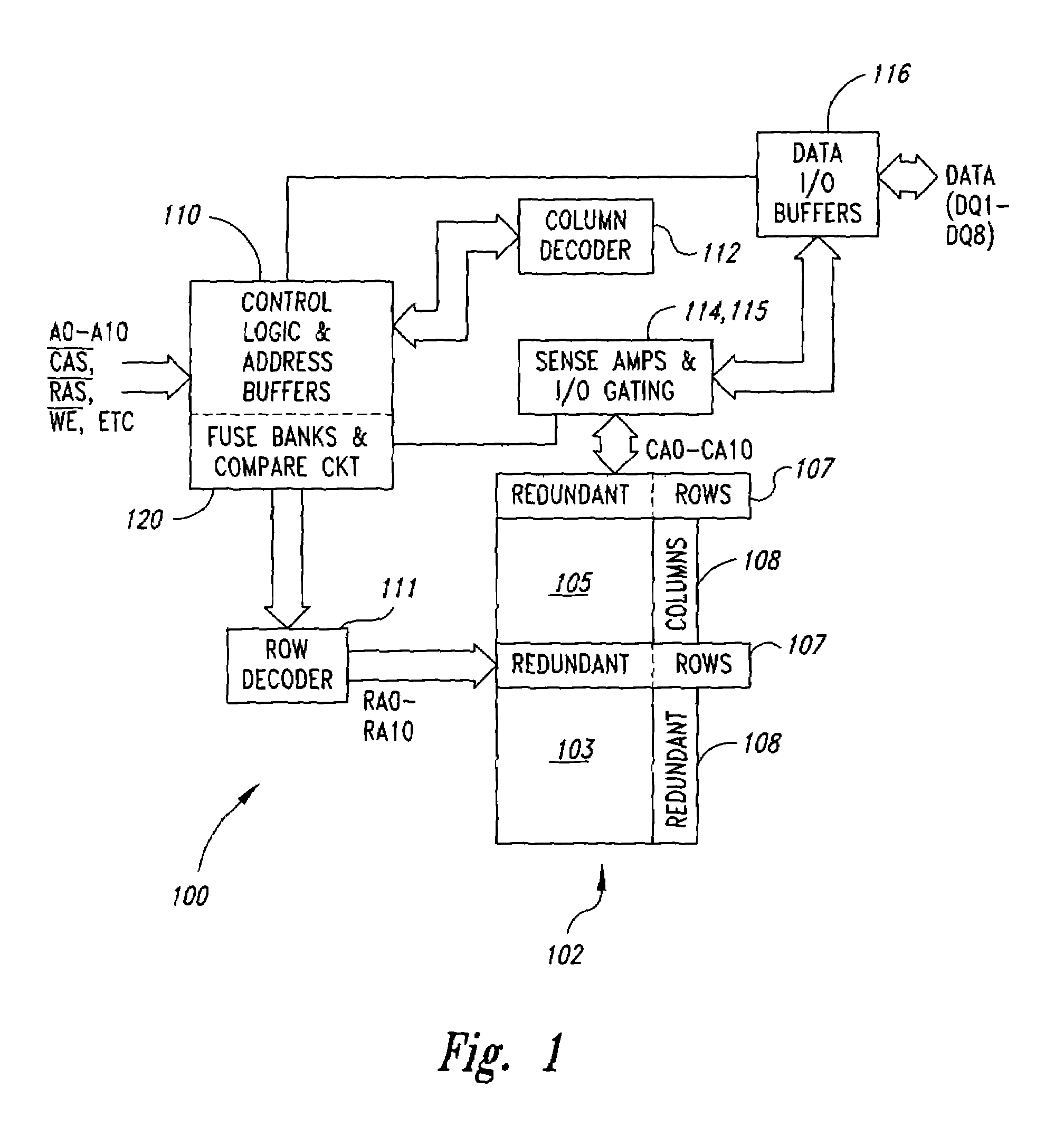Layout for a semiconductor memory device having redundant elements
a memory device and redundant element technology, applied in the field of memory devices, can solve the problems of semiconductor device failure test, high cost, and high cost, and achieve the effect of reducing the area on the die required
- Summary
- Abstract
- Description
- Claims
- Application Information
AI Technical Summary
Benefits of technology
Problems solved by technology
Method used
Image
Examples
Embodiment Construction
[0030]Referring to FIG. 1, a memory device 100 includes one or more memory arrays 102 each having primary memory sub-arrays such as two sub-arrays 103 and 105. Each of the primary memory sub-arrays 103 and 105 has redundant rows 107 and redundant columns 108 of memory cells. As described above, the redundant rows and columns 107 and 108 are selectively enabled to replace defective rows or columns of memory cells, respectively, in the primary memory sub-arrays 103 and 105.
[0031]Control logic and address buffer circuitry 110 receives externally applied signals such as an 11-bit addresses word on address lines or pins A0–A10. The control logic and address buffer circuitry 110 also receives externally generated control signals such as column address strobe CAS, row address strobe RAS, write enable WE, and so forth, as is known by those skilled in the relevant art. When the control logic and address buffer circuitry 110 receives the addresses on address lines A0–A10, it buffers and latch...
PUM
 Login to View More
Login to View More Abstract
Description
Claims
Application Information
 Login to View More
Login to View More - R&D
- Intellectual Property
- Life Sciences
- Materials
- Tech Scout
- Unparalleled Data Quality
- Higher Quality Content
- 60% Fewer Hallucinations
Browse by: Latest US Patents, China's latest patents, Technical Efficacy Thesaurus, Application Domain, Technology Topic, Popular Technical Reports.
© 2025 PatSnap. All rights reserved.Legal|Privacy policy|Modern Slavery Act Transparency Statement|Sitemap|About US| Contact US: help@patsnap.com



